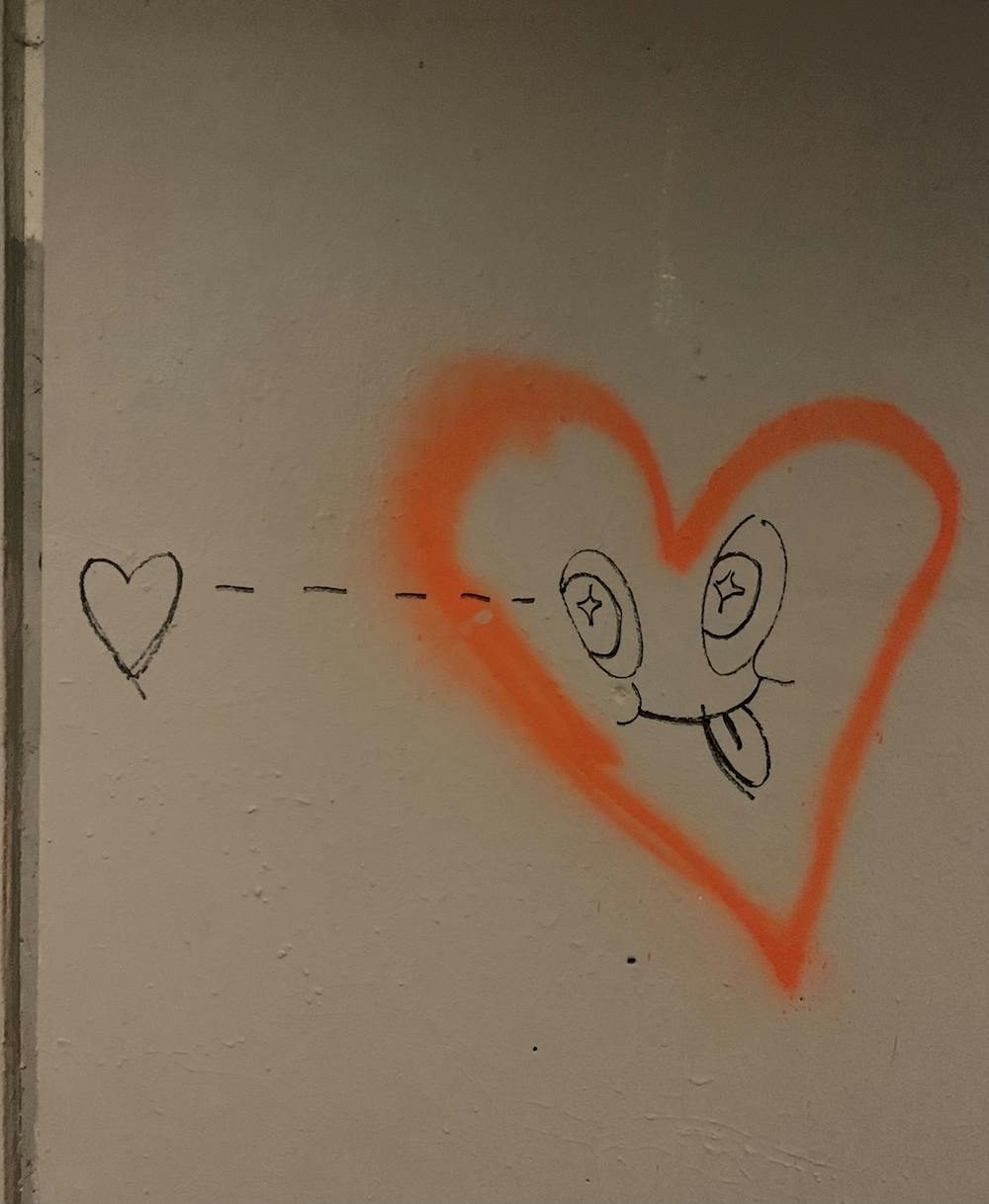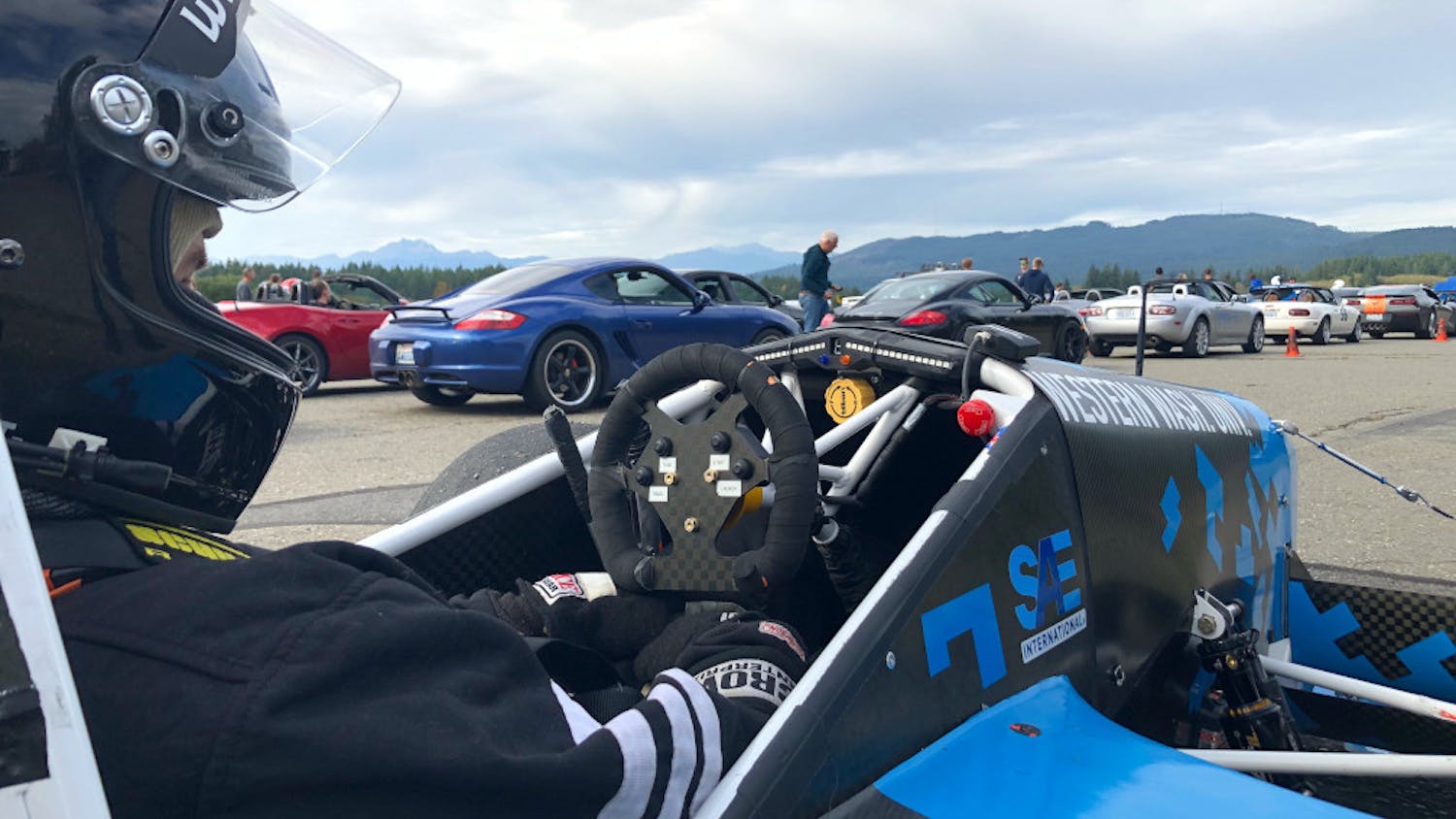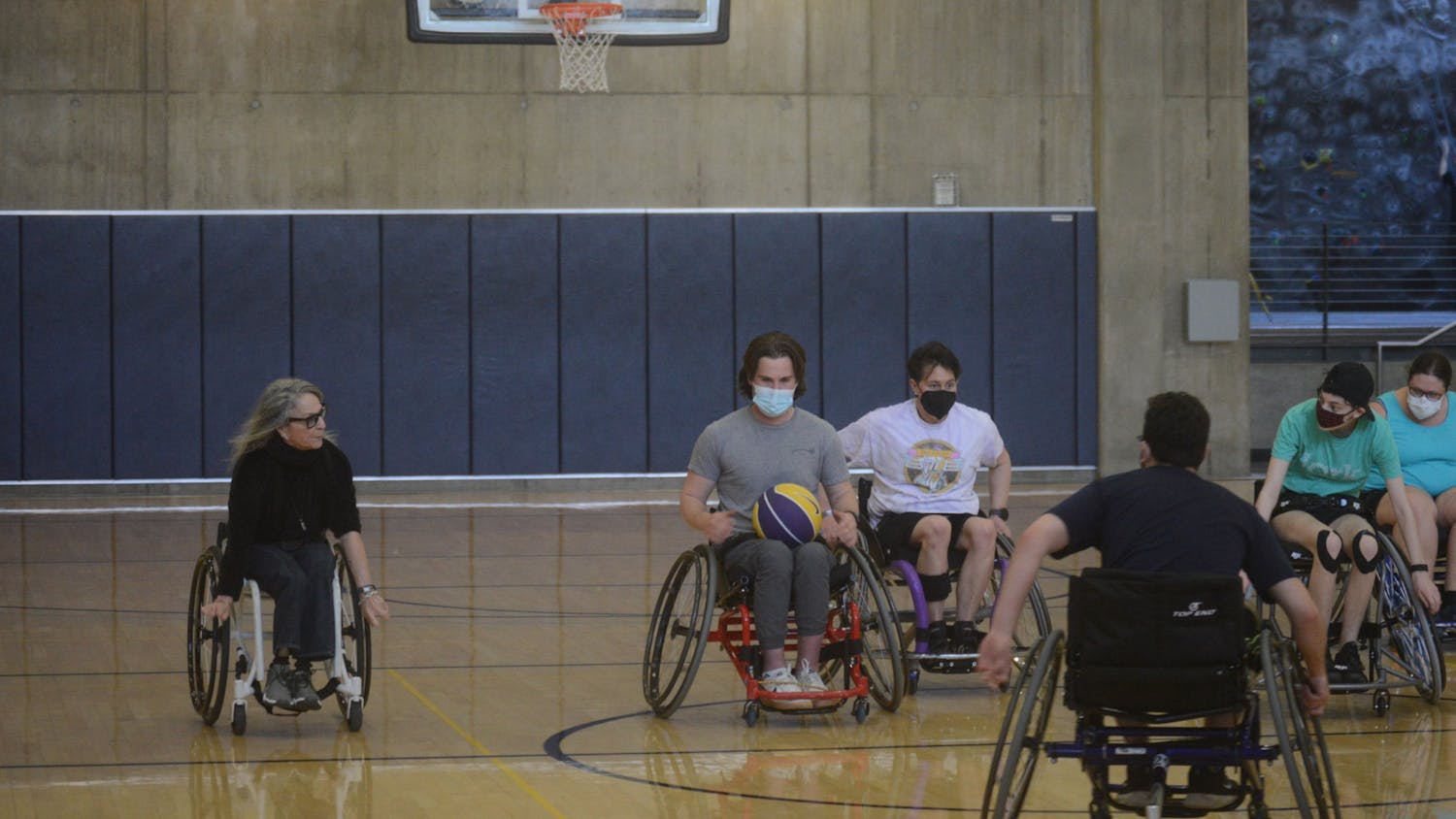A short, low tunnel surrounded by greenery welcomes you to Fairhaven College and its dorms. Its walls painted with layers and layers of gray paint from years of battling graffiti.
Visitors often see spray-painted or sharpied images and words on the walls. The graffiti is usually covered up the next day, but artist retaliation is consistent.
“Taggers love this area as it is out of sight, and they get a lot of viewers,” said Sergeant Ron Carpenter of Western Washington University's police force.
At the beginning of the school year, a mosaic of drawings covered the wall, each one adding to the next. One wall even said “Have a nice day” in huge letters with a rainbow behind it.
“There seems to be an uptick at the beginning of each quarter,” said John Furman, the director of Facilities Management at Western. “There is also some correlation with high profile news events.”
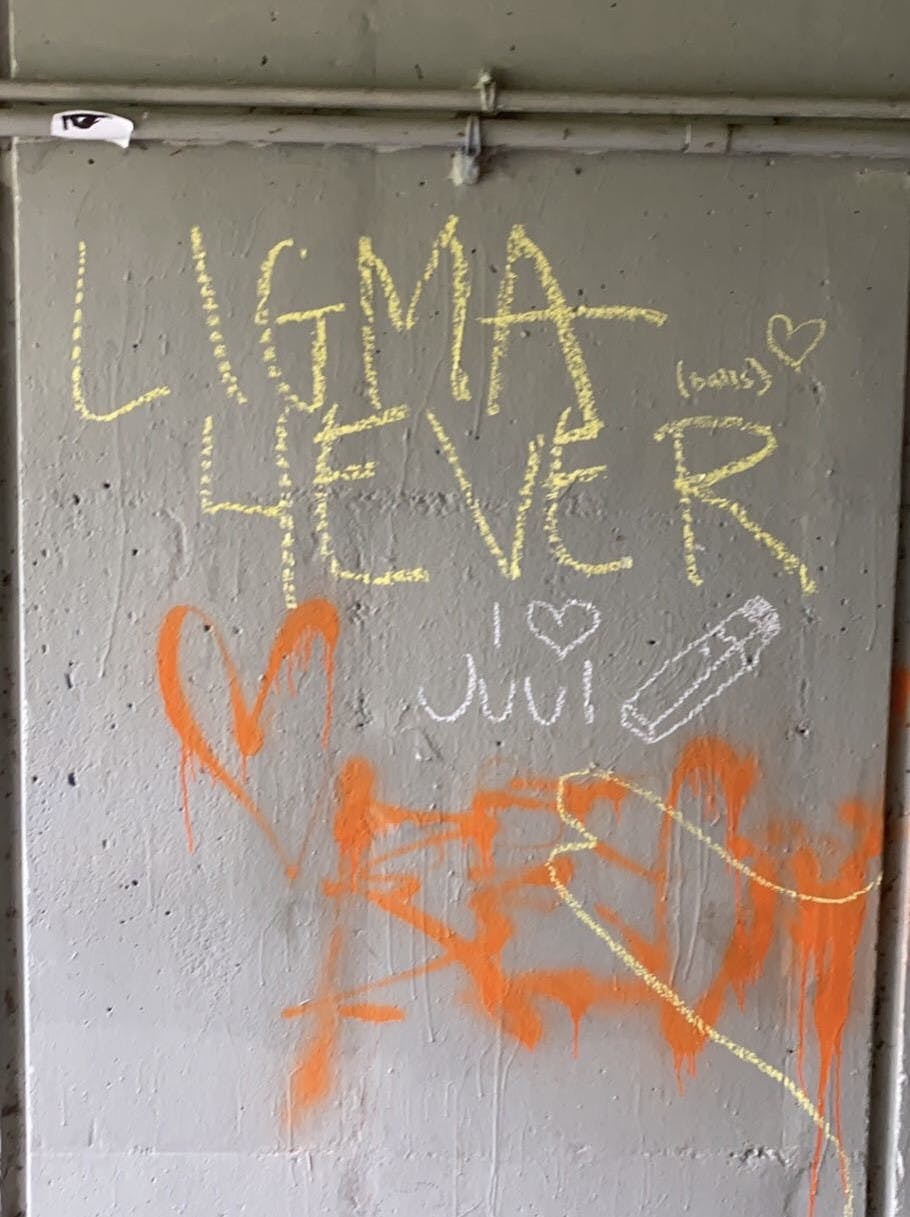
Several taggers, using spraypaint and chalk, leave their colorful messages on the tunnel's walls. // Photo courtesy of Kaylene Wells
I enjoy seeing the elaborate work and finding new words or drawings each time I pass through the tunnel. It feels like some community event, all the students adding their own touch to the once plain walls.
“The graffiti is a unique look into the minds of some of our fellow college students and, in a way, feels like an abstract representation of how we feel,” said Blake Thomspon, a third-year at Western.
When the graffiti was covered up, Thompson found himself a little disappointed.
In a survey with 16 responses, posted on the Fairhaven discord, 53.3% of responders said they enjoy seeing graffiti and believe it is a form of art.
I hold some small pride in knowing I am friends with the person who started putting their drawings up around campus before everyone else this school year. An artist who didn’t just sketch on the walls, but reminded passersby of the epidemic of missing and murdered indigenous women in our country.
Other students have used the space to protest and bring awareness to nationwide issues. On the morning of May 4, chalk writing could be found on the floor of the tunnel that conveyed negative feelings towards SCOTUS and said, “abortion is a human right.”

A chalk drawing on the floor of the Fairhaven tunnel says “abortion is a human right.” // Photo by Jemma Alexander
Graffiti in the tunnel usually never lasts more than a week. The painting over is inevitable, but it only provides a new blank canvas. Not long after, new drawings begin popping up. Random messages and doodles once again dominate the gray walls.
As time has gone on, the themes most present in the graffiti have changed, and not necessarily for the better. As paint layer over paint layer is added, the graffiti becomes cruder and cruder. Curse words and lewd images and even pictures of animals with certain enlarged...parts were found on the walls of the tunnel for brief periods of time.
This cycle has continued throughout the year, a dramatic back and forth climaxing in a week where the wall remained covered in smears of pumpkin and jelly, followed by the longest blank period I have seen.
“In all instances, any graffiti that is deemed offensive or hateful goes to the front of the line and is cleaned as soon as possible,” Carpenter said.
I am led to believe that the graffiti and chalk drawings at the beginning of the year were left alone for so long because it was deemed unoffensive, maybe even positive. But it makes me wonder why the food smeared on the walls was left for so long.
Were they making us live with our grossness?
In the survey of Fairhaven residents, over 85% said graffiti should only be covered up “depending on the content.”
I want to make sure it is understood that real people have to remove the graffiti.
“If you happened to be the architect or designer of that building — or the hard-working paint shop which has to clean up the mess — that graffiti has defaced your work,” Furman said.
While these perspectives limit my ability to appreciate the graffiti, lewd or encouraging, I do not want to lose my original opinion on it. Every time I walked to my 9 a.m. class, the walk was wonderfully improved by pausing to make out whatever hieroglyphs were left the night before.
It reminds one that the people around you want to make their mark on the world, even if it is just graffiti in a dark corner.
“For a while walking through the tunnel always interested me because I would get to see how the graffiti would evolve and change over time,” Thompson said.
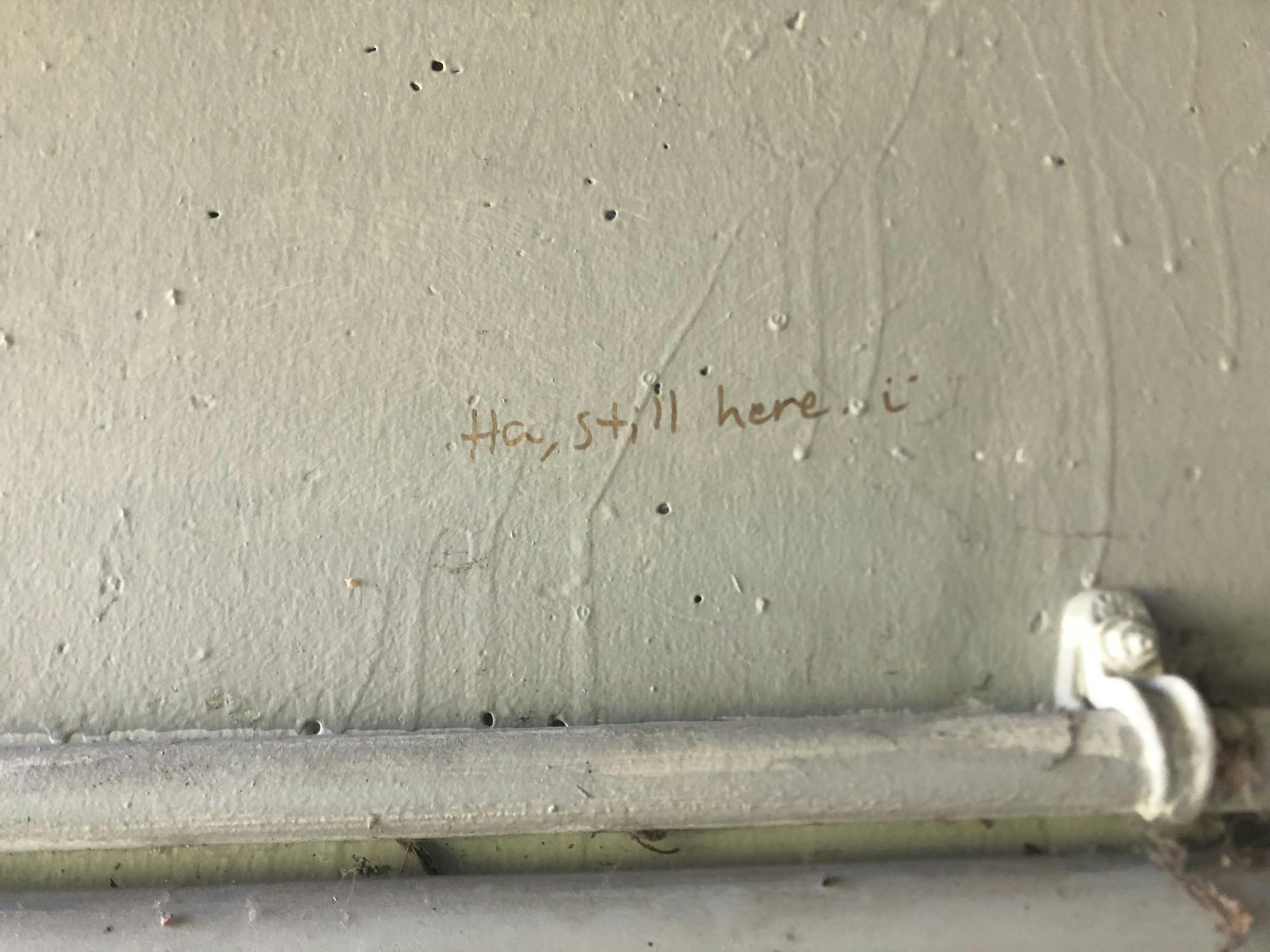
After a layer of graffiti had been covered, taggers let others know they are still there. // Photo by Jemma Alexander
I can't help but think of the graffiti as a sort of collaborative, found art. This is likely influenced by my mother whose art often incorporates another man's trash. She sees graffiti and all its additions and removals as the world’s constant state of flux.
My optimistic mind wants me to make a plea for not removing the graffiti, for letting it remain and grow and morph however it likes. But I understand that the university has to uphold its image and part of that is keeping the campus clean and tidy.
Can I instead plea for students to keep their graffiti lighthearted? PG-13? One is then faced with the question: will college students ever stop drawing...certain shapes?
“I believe that will never change no matter how much you ask,” Thompson said.
I agree.
While the graffiti artists have slowed down in the past couple of weeks, whenever one makes their mark it is quickly painted over, leaving a faded eye staring at you from within the gray walls.
I can think of one solution that might remove the instinct to draw on the plain, gray walls and will make the morning commute to class more colorful for everyone in and around Fairhaven. For a school that prides itself on the art found around campus, I am surprised a blank canvas like this hasn't been utilized. A mural lining the walls of the tunnel may not stop all graffiti, but it might make the graffiti look like it belongs there.

Jemma Alexander (she/her) is a campus life reporter for The Front. She is a senior majoring in journalism new/ed and minoring in Arab American studies. When she's not doing homework, Jemma is likely working, talking loudly over movies with her roommates or dancing ’till she drops. You can reach her at jemmaalexander.thefront@gmail.com.


